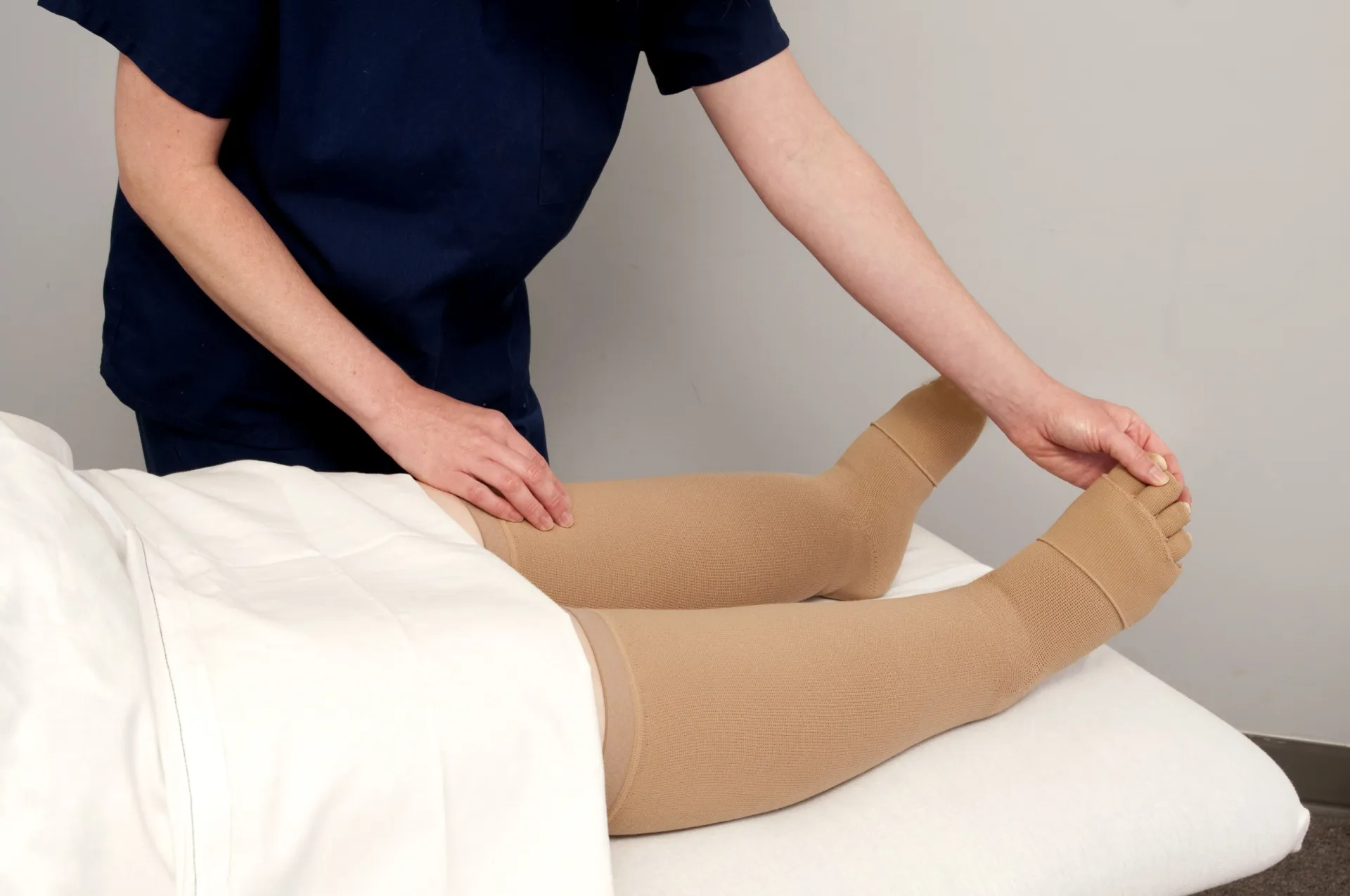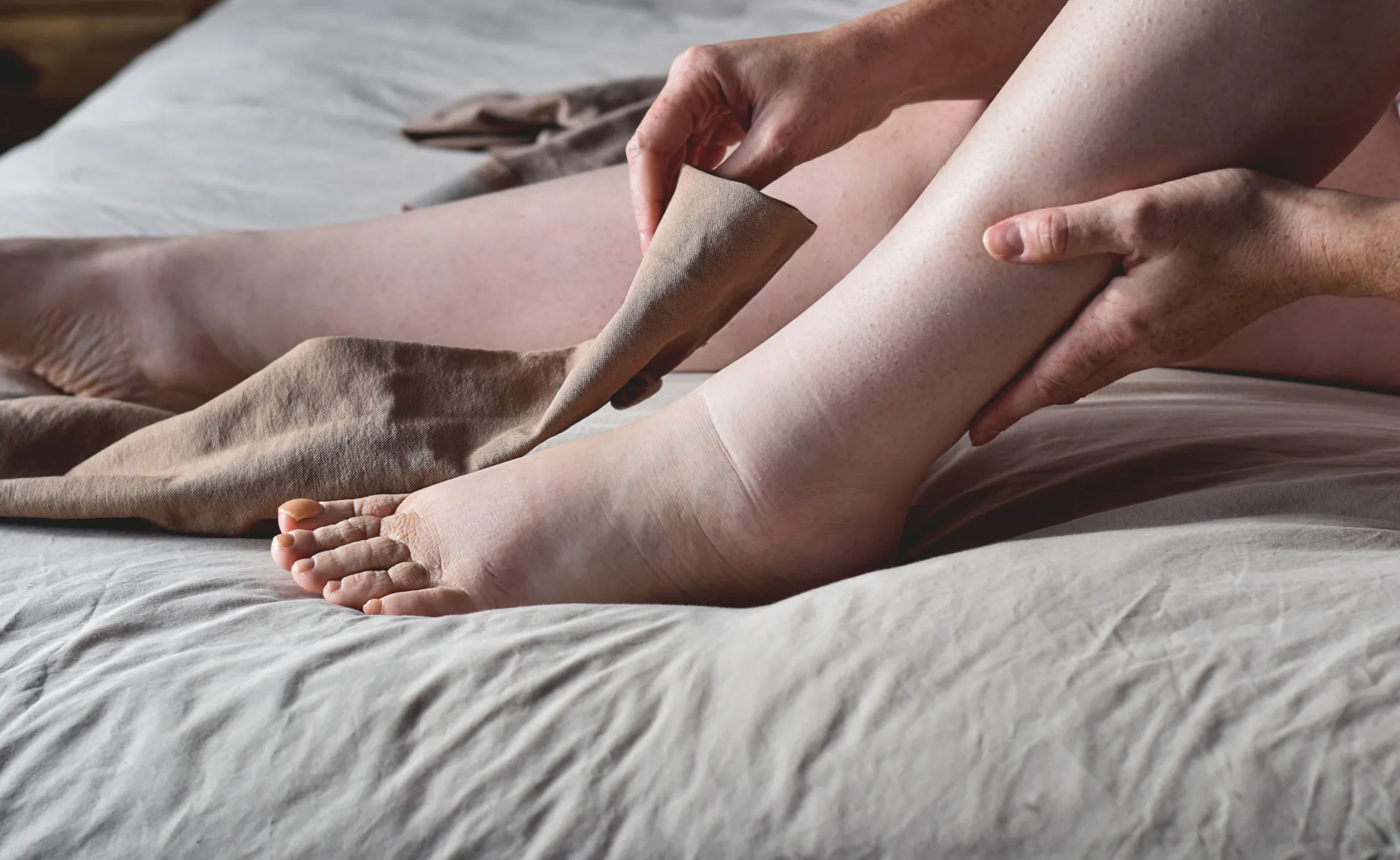Compression Stockings

Dealing with tired, achy legs from venous insufficiency can make even the simplest of daily tasks uncomfortable. While compression stockings may feel like an oversimplified solution, understanding how to properly use them makes a major difference in managing your symptoms.
At Prevosti Vein Center, Dr. Louis G. Prevosti brings over 30 years of specialized cardiovascular experience to help patients restore their comfort and activity level with complete vein care. As a physician who focuses exclusively on vein disorders, Dr. Prevosti recognizes that compression stockings serve as a therapeutic measure and an important component of comprehensive vein care.

What Are Compression Stockings?
Compression stockings are specialized hosiery designed to apply graduated pressure to your legs. This means that the strongest compression is applied at the ankle, gradually decreasing toward the knee or thigh.
Unlike regular socks or stockings, medical-grade compression garments are precisely engineered to support venous circulation and reduce symptoms associated with vein disorders, including achy and swollen legs. These garments come in different compression levels, lengths and styles to address specific conditions and patient needs. Dr. Prevosti will recommend the appropriate compression strength and style based on your individual symptoms, physical examination and ultrasound results.
How Do Compression Stockings Improve Circulation?
By consistently applying external pressure to your leg muscles and underlying veins, compression stockings act like an additional layer of muscle and deep fascia (the fibrous sheath around muscle). Helping your “leg pump” mechanism work more efficiently facilitates the return of venous blood to your heart. There is less pooling of blood, less pressure, and less fluid build up in the tissues.

Who Benefits From Wearing Compression Stockings?
All of us, really. Dr. Prevosti calls them “anti-gravity devices". He is a big fan of compression stockings! Compression stockings are most beneficial to patients that have venous insufficiency, especially those experiencing symptoms, including leg swelling, aching, heaviness and fatigue. They prove particularly helpful for those who stand or sit for extended periods during work, pregnant women experiencing venous symptoms and patients recovering from vein treatments.
Wearing compression stockings when traveling more than four hours (plane ride or automobile) can reduce swelling and reduce the risk of blood clots. When we are traveling, we are confined to a small seat with limited mobility. Our calf muscles are not working much, and blood can stagnate in the legs, even in people that do not have venous insufficiency. For this same reason, fluid can build up in the tissues of the ankle and calf. On plane flights, there is less pressure in the cabin than at sea level, which can contribute to ankle swelling. Wearing compression stockings adds pressure to the leg tissue, which helps reduce that amount of fluid that accumulates.
Compression stockings are essential for patients with lymphedema. When the lymphatic drainage system is not working properly, or some other condition is causing an increased production of lymph fluid, compression stockings help the lymphatic system move lymph fluid out of the leg. The increased pressure that therapeutic stockings deliver to the tissue make it more difficult for fluid to accumulate.
Compression therapy can also benefit people with spider veins, varicose veins. They are also helpful in preventing blood clots during long periods of immobility, such as after surgery, during a hospitalization, or other situations of prolonged bed rest. However, certain medical conditions may make compression stockings inappropriate, which is why a thorough evaluation by Dr. Prevosti is vital to ensure safe and proper use of compression garments.
How to Optimize Results When Using Compression Stockings
Getting the most out of compression stockings requires proper fitting, consistent use and appropriate care. Dr. Prevosti emphasizes that ill-fitting compression garments can be ineffective or even counterproductive. Professional measurement is essential to ensure optimal results.
Wear your compression stockings throughout the day, putting them on first thing in the morning before swelling develops. Remove them at bedtime unless instructed otherwise by Dr. Prevosti. Combining compression therapy with regular movement, leg elevation and other lifestyle modifications enhances overall symptom management and supports your vein health.

Experience Lasting Symptom Relief at Prevosti Vein Center
While compression stockings can significantly improve your symptoms for better daily functioning, they work best as part of a comprehensive approach to treating vein disorders. Dr. Prevosti's exclusive focus on venous conditions means you receive expert guidance on selecting and using compression therapy effectively while addressing the underlying causes of your symptoms.
Schedule your consultation today to discover how Dr. Prevosti's compassionate, specialized approach can help you achieve optimal comfort and vein health through personalized compression garment fitting and guidance.